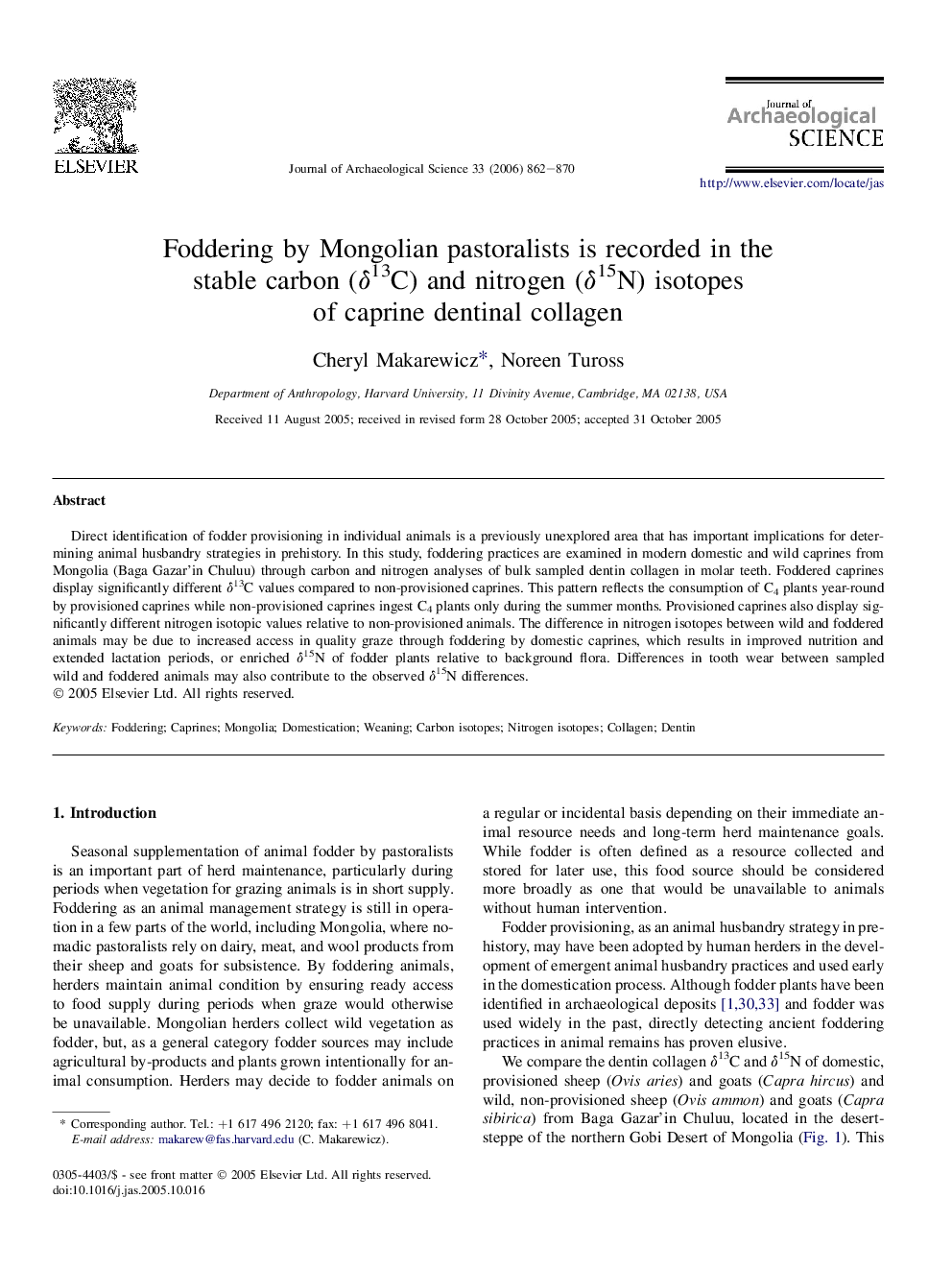| Article ID | Journal | Published Year | Pages | File Type |
|---|---|---|---|---|
| 1037629 | Journal of Archaeological Science | 2006 | 9 Pages |
Direct identification of fodder provisioning in individual animals is a previously unexplored area that has important implications for determining animal husbandry strategies in prehistory. In this study, foddering practices are examined in modern domestic and wild caprines from Mongolia (Baga Gazar'in Chuluu) through carbon and nitrogen analyses of bulk sampled dentin collagen in molar teeth. Foddered caprines display significantly different δ13C values compared to non-provisioned caprines. This pattern reflects the consumption of C4 plants year-round by provisioned caprines while non-provisioned caprines ingest C4 plants only during the summer months. Provisioned caprines also display significantly different nitrogen isotopic values relative to non-provisioned animals. The difference in nitrogen isotopes between wild and foddered animals may be due to increased access in quality graze through foddering by domestic caprines, which results in improved nutrition and extended lactation periods, or enriched δ15N of fodder plants relative to background flora. Differences in tooth wear between sampled wild and foddered animals may also contribute to the observed δ15N differences.
